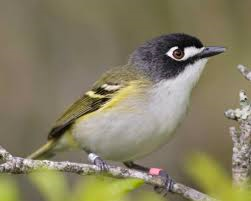I notice the black-capped vireo was recently removed from the endangered species list by the U.S. Fish and Wildlife Service. I am hopeful this is a sign the bird is on its way to better days.
 Black-capped Vireo
Black-capped Vireo
There were only 350 adult birds in the wild back in 1987, when this vireo was declared to be endangered. Today, there are some 14,000 birds, so things are looking up.
One of the things that most helped this bird was creation of the Balcones Canyonlands Reserve in western Travis County. I&rs...
I notice the black-capped vireo was recently removed from the endangered species list by the U.S. Fish and Wildlife Service. I am hopeful this is a sign the bird is on its way to better days.
There were only 350 adult birds in the wild back in 1987, when this vireo was declared to be endangered. Today, there are some 14,000 birds, so things are looking up.
One of the things that most helped this bird was creation of the Balcones Canyonlands Reserve in western Travis County. I’ve looked for birds on this preserve and was impressed with the healthy habitat provided for birds and other wildlife. Likewise, the vireo benefitted from protective measures which included trapping brown-headed cowbirds.
Cowbirds are notorious for laying their eggs in any available nest and letting an unsuspecting mother bird raise the cowbirds along with her own brood. In fact, the larger cowbirds sometimes kick out the legitimate baby birds from the nest.
The black-capped vireo is the smallest and most distinctively marked of all North American vireos. Prominent white spectacles around the eyes and an all-black head mark this distinguished songbird. It winters in Mexico and arrives in our area in March and leaves around September.








